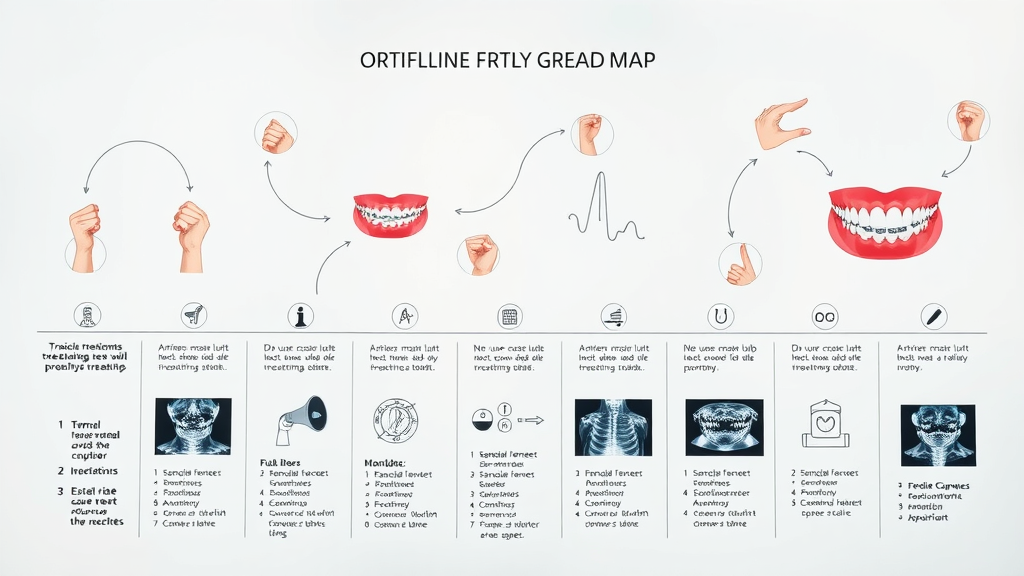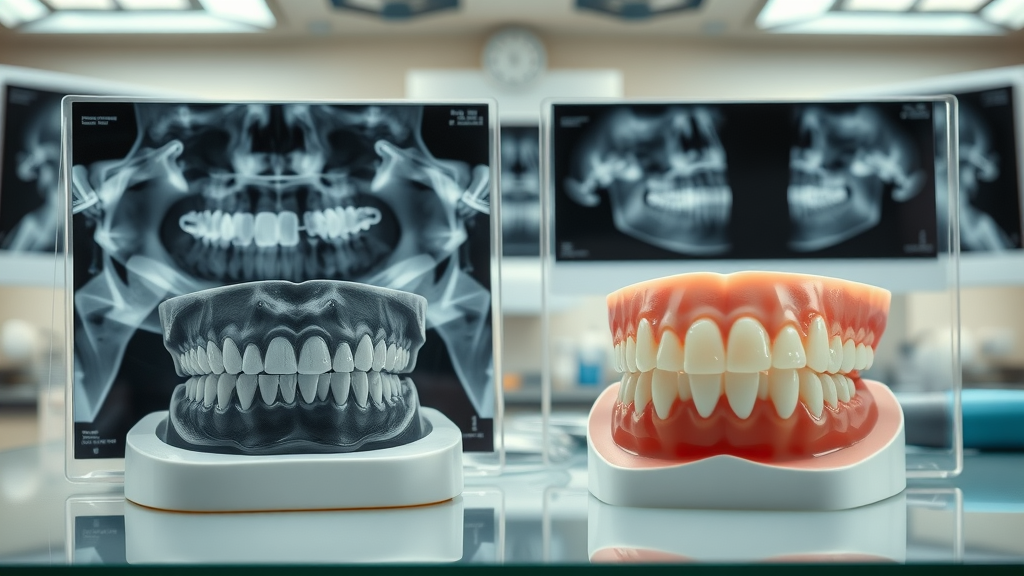- Ever wondered why some people wear braces for years while others finish much sooner? Discover the real factors dictating how long orthodontic treatment usually takes—and what that means for your smile.

Understanding How Long Orthodontic Treatment Usually Takes – Setting Realistic Expectations
If you’re planning for a beautiful smile with orthodontic treatment, you’re probably asking, how long does orthodontic treatment usually take? The truth is, there isn’t a one-size-fits-all answer. Treatment duration depends on several unique factors around your specific dental issues, type of braces, and adherence to your treatment plan. Most people wear braces or use clear aligners for one to three years, but timelines can shift based on your oral health and alignment needs.
Setting realistic expectations is key for a smooth orthodontic journey . For example, someone with minor crowding and excellent compliance may finish in under a year, while complex alignment issues could require longer treatment times. Your orthodontist’s first step will be to provide a detailed treatment plan after assessing your teeth and bite. From diagnosis to brackets and wires or clear aligners, every phase affects your overall treatment time. Understanding these variables will ensure you’re prepared and confident as you work toward your healthy, beautiful smile.
What Influences Treatment Time in Orthodontic Treatment?
- Key factors affecting treatment duration such as age, dental issues, and compliance
Age plays a significant role in treatment time . Younger patients often experience faster tooth movement because their jaws and bones are still developing, which helps braces and other orthodontic appliances work more efficiently. In contrast, adults may encounter longer timelines due to denser bone structures and more established bite patterns. Your specific dental issues —like crowding, spacing, or bite problems—also impact how long you’ll need braces treatment or aligners.
Patient compliance is especially critical for keeping your orthodontic treatment on schedule. This includes wearing elastics as directed, following dietary restrictions, and maintaining good oral hygiene. Failing to follow these guidelines can result in longer orthodontic treatment, as issues like broken brackets, missed appointments, or dental health problems slow progress. No two cases are alike, but understanding these influences gives you the power to keep your treatment duration as short and effective as possible.
Specialized appliances, type of braces chosen—be it traditional metal, ceramic braces, or clear aligners like Invisalign—and the severity of your alignment issues directly correlate with treatment times. More advanced technologies and materials can sometimes lead to quicker tooth movement, but it always comes down to your unique needs and how carefully you follow your treatment plan .
Defining the Typical Timeline: How Long Does Orthodontic Treatment Usually Take?
- Average durations, overview of braces treatment and aligners
On average, orthodontic treatment with braces takes between 18 and 24 months. However, some cases may resolve in as little as 12 months, while complex alignment issues can require up to three years. The classic image of metal braces encompassing “years of commitment” is evolving as orthodontics advances. Modern clear aligners and ceramic braces may move teeth more efficiently for some patients, especially those with mild or moderate dental issues.
It’s important to note that clear aligner systems like Invisalign typically treat mild-to-moderate misalignments in 6 to 18 months, but only if the aligners are worn as prescribed—usually 20-22 hours per day. No matter the method, achieving a healthy smile means letting your teeth move into their proper positions gradually, which keeps bone and gum tissue healthy. Discussing realistic timelines with your orthodontist and understanding your individual needs will make your journey more transparent and successful.
Some braces treatment scenarios feature shorter phases, such as interceptive treatments for children, while others might combine appliances for more comprehensive results. Remember, treatment durations vary wildly, so always measure progress in milestones, not just months on a calendar.
Key Stages in Braces Treatment and Their Impact on Treatment Time
Initial Consultation to Treatment Plan: The Roadmap of Orthodontic Treatment
- Diagnosis, record-taking, and personalized treatment plan development
Every successful orthodontic journey begins with an initial consultation. During this stage, your orthodontist conducts a thorough examination of your mouth, teeth, and jaw alignment. This often involves taking X-rays, digital scans, and photographs. These records allow for an accurate diagnosis of your dental issues and give insight into any underlying problems that may influence your treatment time .
After gathering these essential records, your orthodontist develops a customized treatment plan . This plan outlines the type of orthodontic appliances needed (such as traditional metal braces , ceramic braces , or clear aligners ), targeted tooth movement, and estimated treatment duration. By planning each step, your orthodontist ensures your teeth move efficiently toward a healthy smile while minimizing surprises or delays.
This early phase sets the tone for your entire treatment experience. A clear roadmap not only streamlines each phase but also aligns your expectations, so you know what to anticipate and when. Ask about milestones, checkups, and how oral hygiene will play into every step of your journey for a smoother, more predictable experience.

Wearing Braces: Monitoring Alignment and Adjustments
- Monthly adjustments, monitoring dental issues, effects on treatment duration
After braces or aligners are applied, the active phase of tooth movement begins. Wearing braces involves frequent follow-up appointments—often monthly—so your orthodontist can monitor your progress and make adjustments. These visits are key to ensuring your teeth are moving as planned, addressing issues like loose brackets, or responding quickly to unexpected alignment problems.
During each adjustment, brackets and wires may be tightened or replaced. For clear aligners , new sets are given every one to two weeks, steadily moving your teeth toward their desired positions. Changes in your good oral hygiene and compliance during this stage can speed up or slow down treatment times ; missed appointments, broken appliances, or poor oral health can cause noticeable delays.
Being consistent with your appointments and following your orthodontist’s guidance doesn’t just help you finish faster—it also reduces the potential for problems like decalcification or gum disease, both of which threaten the effectiveness and safety of your orthodontic treatment.
Treatment Duration: Braces vs. Other Orthodontic Options
| Type of Orthodontic Appliance | Average Treatment Duration | Pros | Cons |
|---|---|---|---|
| Traditional Metal Braces | 18-36 months | Suitable for all cases, reliable results, cost-effective | Noticeable appearance, oral hygiene needs more attention |
| Ceramic Braces | 18-36 months | Less visible, effective for complex cases | Fragile, may stain, similar timeline to metal braces |
| Lingual Braces | 18-36 months | Hidden behind teeth, suitable for cosmetic concerns | Harder to clean, may affect speech, longer adjustment period |
| Clear Aligners (Invisalign) | 6-24 months | Nearly invisible, removable, comfortable | Frequent wear required, not ideal for complex issues |
- Detailed pros and cons of each orthodontic treatment regarding time efficiency
Each type of braces brings its own treatment times and considerations. Traditional metal braces are durable and suitable for nearly all orthodontic issues, but can be more noticeable and require meticulous oral hygiene . Ceramic braces are less visible but slightly more delicate, while lingual braces are hidden from view but may need an extended adjustment period.
Clear aligners offer the fastest timelines for mild to moderate cases, but only if you commit to wearing them for the recommended number of hours per day. Skipping wear time can lead to extended treatment. Consider your comfort level, lifestyle, and oral health needs when evaluating which option fits you best, and always ask your orthodontist for their recommendations based on your case.
Dental Issues and Alignment Issues Affecting How Long Orthodontic Treatment Usually Takes
Severe vs. Mild Orthodontic Issues: How They Alter Treatment Duration
- Case studies: overbite, underbite, crowding, spacing
The nature and severity of your orthodontic issue directly impacts treatment time. For instance, a mild spacing problem may be corrected with clear aligners in less than a year, while complex issues like a severe overbite or significant crowding typically need comprehensive braces treatment that can last two or three years.
Let’s look at some examples:
- Overbite correction: Mild cases can resolve in 12-18 months; severe overbites may extend past two years.
- Crowding: Addressed quickly if slight, but severe cases require more time—especially if teeth must be extracted.
- Spacing: Gaps between teeth close relatively quickly, usually in 6-12 months, unless more complex bite correction is needed.
- Underbite: Typically a lengthier fix, as it may involve jaw movement or even surgery.
Every orthodontic treatment is as unique as the patient’s teeth, and your orthodontist will select the best approach for your specific dental issues . Early diagnosis and action tend to reduce overall treatment duration and promote a smoother, more predictable journey to a healthy smile .

Addressing Unexpected Dental Issues During Orthodontic Treatment
- How delays and complications can extend treatment time
Complications can arise at any point in your orthodontic journey . Sometimes teeth don’t move as predicted due to genetic factors, slow bone remodeling, or underlying dental issues that were undetectable at the start. Other times, problems like a lost appliance, broken bracket, or new cavities can delay treatment time .
If gum disease, tooth decay, or significant oral hygiene lapses surface during wearing braces , pauses in your treatment may be necessary to restore a healthy environment for your moving teeth. Additional appliances or refinements, such as elastics or springs, may be implemented to correct stubborn alignment issues, extending treatment by several months.
Regular communication with your orthodontist, prompt attention to any discomfort, and a commitment to good oral hygiene are your best defense against unnecessary setbacks. Addressing issues quickly means you’ll stay on track for that beautiful smile , even if a few bumps occur along the way.
The Role of a Customized Treatment Plan in Reducing Treatment Time
- Efficiency of a well-structured treatment plan for faster, more predictable results
A carefully crafted treatment plan is the most powerful tool for ensuring your orthodontic journey stays as brief and effective as possible. By considering your unique oral anatomy, bite issues, and lifestyle needs, your orthodontist can forecast tooth movement and minimize delays.
"A tailored treatment plan is the blueprint for your journey to a beautiful smile." – Dr. Jane Smith, Orthodontist
Modern technology—like digital scans, 3D planning, and advanced bracket systems—allows orthodontists to map out every step, reducing guesswork and enhancing predictability. Your personalized plan outlines adjustments, check-ins, and milestones, so you know what to expect and can partner effectively with your provider.
Follow each phase of your treatment plan precisely to benefit from the highest efficiency, making the most of your time, effort, and investment.
Patient Compliance and How Long Orthodontic Treatment Usually Takes
- Wearing elastics, using prescribed appliances, and attending follow-up appointments

Patient behavior plays a pivotal role in how long orthodontic treatment usually takes . Consistently wearing elastics and any prescribed appliances, along with diligently attending follow-up appointments, ensures your teeth progress as planned. Those who skip appointments or forget to wear devices often face prolonged treatment durations or even risk needing to start over.
"Your commitment plays a critical role in achieving timely orthodontic success." – Dr. Alex Lee, Orthodontic Specialist
Compliance also means maintaining good oral hygiene throughout your treatment. Letting your toothbrush or floss routines slip can invite cavities or gum disease, both of which may require pauses in your treatment for repairs. Engaged, responsible patients tend to have the shortest, smoothest, and most successful orthodontic journeys.
Partnering with your orthodontist and asking questions about how to maximize your results helps reduce treatment time and keeps you moving steadily toward your end goal—a straighter, healthier, more confident smile.
How Wearing Braces Impacts Lifestyle and Treatment Time
- Dietary changes, oral hygiene habits, and daily routines that influence overall braces treatment time

It’s not just dental visits that determine how long orthodontic treatment usually takes —your daily habits make a big difference. Wearing braces (or aligners) means making smart dietary choices to prevent broken brackets and cavities. Sticky, hard, or sugary foods can cause appliance damage or oral health setbacks, both of which extend treatment time .
Oral hygiene is even more important while undergoing braces treatment . Brushing and flossing around brackets and wires can be challenging, but diligent care prevents decalcification, gum disease, and cavities—all of which may prompt treatment delays. Many orthodontists recommend special brushes or water flossers to help maintain a clean, healthy mouth throughout the process.
Finally, adapting your routine to fit in extra cleaning time, regular appointments, and adjustments to speech or eating will support your journey. Taking these responsibilities seriously promotes quicker tooth movement and ensures that, when you’re done, your beautiful smile is also a healthy one.
Beautiful Smile: What Happens After Orthodontic Treatment?
- Retention phase, wearing retainers, and maintaining alignment for lasting results
Completing your active phase of orthodontic treatment is just one milestone on your journey to a beautiful smile . The next essential step is the retention phase, where you’ll wear retainers—either full time or just at night—depending on your specific needs. This phase helps your teeth stabilize in their new, proper positions and prevents relapse.
Wearing retainers as prescribed solidifies the work done by your braces or aligners, ensuring your results last for years to come. Don’t skip this part! Excellent oral hygiene and routine dental care remain critical for safeguarding your straight, healthy teeth.
Remember, your investment in good oral health continues for life. Retention is the final, but ongoing, key to a lifetime of confident smiles.
People Also Ask
How long does orthodontic treatment take?
- The length of orthodontic treatment typically ranges from 12 to 36 months, depending on several variables. Factors such as the type of appliance used, the complexity of your bite or alignment issues , age, and how well you follow your orthodontist’s instructions all play a part. Mild cases managed with clear aligners might finish in under a year, while more severe problems using traditional metal braces can take several years for full correction. Your orthodontist will outline your anticipated treatment time at your consultation.
What is the average duration of orthodontic treatment?
- According to clinical studies and orthodontic associations, the average braces treatment or clear aligner plan lasts between 18 and 24 months. Some early intervention treatments for children may be shorter. Adults and those with more complex dental issues generally experience longer treatment durations than teens with moderate misalignments. Following the recommended care and appointments is key to staying within typical timelines.
What's the most painful stage of braces?
- Most patients report the highest discomfort during the first week after braces are placed or adjusted. During this stage, your teeth and gums are adapting to pressure, leading to soreness or tenderness. The discomfort usually fades within several days, and later adjustments are generally less painful. Pain can be managed with over-the-counter medication and a soft food diet until the sensation subsides.
How much do braces hurt on a scale of 1 to 10?
- Patient experiences vary, but most rate the discomfort at a 4 to 6 out of 10 in the early days of braces treatment . Most people say soreness is mild and manageable after the first week. Some people don’t notice pain at all, while others are more sensitive—usually only after initial placement or major adjustments. If you have specific concerns, your orthodontist can share pain relief strategies and reassurance tailored to your needs.
Frequently Asked Questions about How Long Orthodontic Treatment Usually Takes
-
Can treatment time be shortened?
Yes, but only if you follow your treatment plan closely—wearing appliances as directed, keeping up with good oral hygiene, and attending all appointments. Advanced technologies like accelerated devices may help, but compliance is always the fastest route to results. -
Do clear aligners work faster than braces?
For simple or moderate alignment issues, clear aligners can sometimes deliver results faster than traditional braces , but only if worn as instructed. Complex cases still require more time, regardless of appliance. -
How does age affect orthodontic treatment time?
Younger patients typically see faster progress due to ongoing jaw and bone development, while adults may face longer treatment durations bound by matured bone density. -
Is orthodontic treatment always necessary for a beautiful smile?
Not always. Some spacing or bite issues are purely cosmetic, while others are crucial for oral health . Your orthodontist can guide you in determining whether treatment is recommended for your goals.
See the progression of actual braces treatment from start to finish—time-lapse reveals real smiles transforming week by week!
Orthodontists answer your top questions about shortening treatment time, explaining the roles of compliance, oral health, and new technologies.
Visual learners, watch a step-by-step animated guide through consultation, appliance placement, adjustments, and retention.
What Every Patient Should Know About Their Treatment Plan and Final Smile
- Checklist: Questions to ask your orthodontist about treatment plan and anticipated timelines
- What is my estimated treatment duration and what factors could change it?
- Which type of appliance is recommended for my dental issues ?
- How often will I need checkups or adjustments?
- What are the risks of extending my treatment time?
- What foods and habits should I avoid?
- How can I protect my oral health and appliances?
- What is the retention plan after active treatment ends?

Quick Key Takeaways — How Long Does Orthodontic Treatment Usually Take?
- Treatment time varies: Most braces treatments last 1-3 years.
- Severity of dental issues impacts the timeline.
- Patient compliance and oral hygiene are crucial for timely results.
- Customized treatment plans and regular follow-ups keep you on track.
- Clear aligners can be faster for simple cases but require responsibility.
- Retention is essential for lasting, beautiful smiles .
Ready for Your Beautiful Smile? Discover Reliable Orthodontic Treatment Information
- Want more expert-backed answers about braces, Invisalign, and local orthodontic care? Subscribe to Grand Strand Smile Spotlight and stay ahead of your smile journey.
Orthodontic treatment durations can vary based on individual needs and treatment types. For instance, the Harvard School of Dental Medicine notes that comprehensive orthodontic treatment can range from 6 to 36 months, depending on the problem’s severity and patient compliance. ( hsdm.harvard.edu ) Similarly, Healthline states that braces help align teeth and jaw, leading to aesthetic and health benefits, with treatment durations varying based on individual needs. ( healthline.com )
 Add Row
Add Row  Add
Add 




Write A Comment